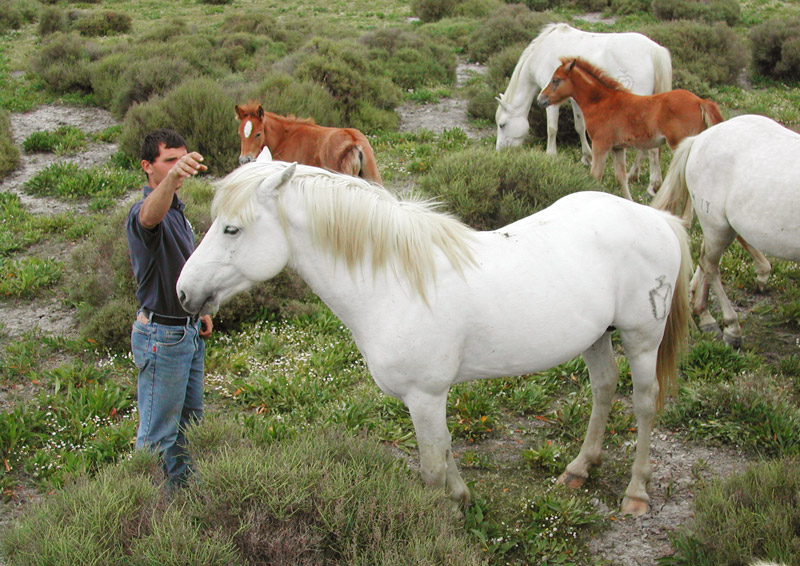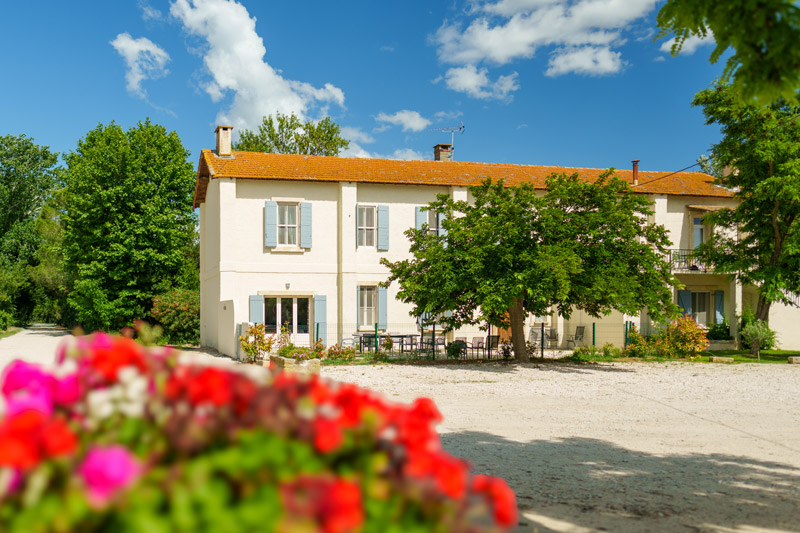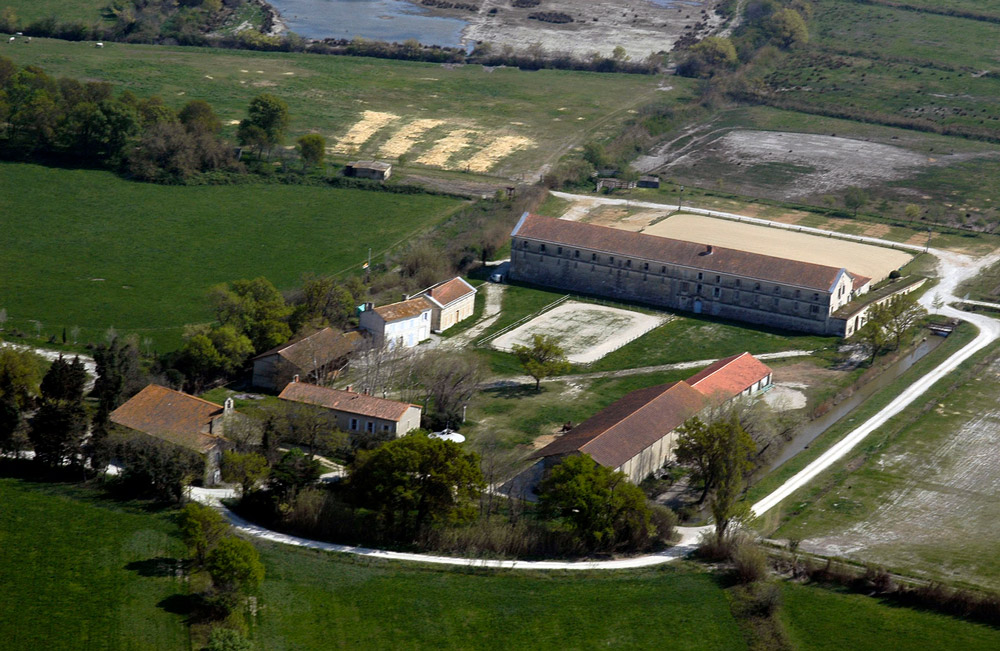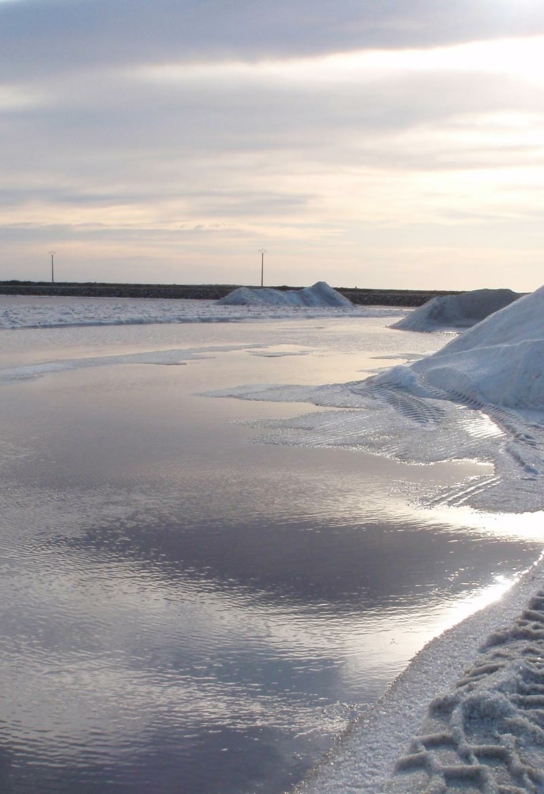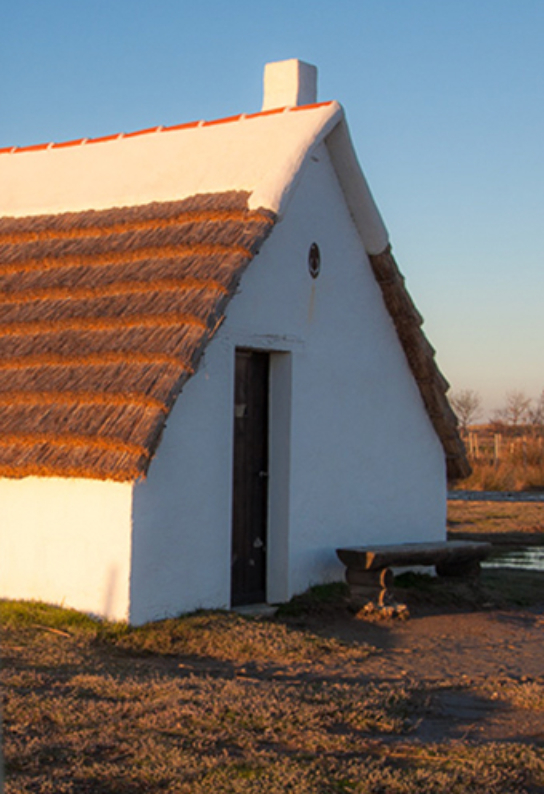Going to and fro across the Camargue is like reading the story of its landscapes. The current shapes are mainly due to the agricultural activities that started in the 19th century. It’s a story about water, sun, salt and wind.
In order to gain workable land in the Camargue, men had to contain the Rhône in its bed and adapt to extreme conditions: salty lands beaten by winds; silty or sandy according to the past river bed; dry or flooded according to the vagaries of the sky.
Of land …
Today’s agriculture in the Camargue is a pattern of grassland, market gardening and cereal production, with a rice culture by submersion practiced regularly in rotation to limit the saline pressure. The sandy soils are home to vineyards, potatoes, carrots and asparagus productions, whilst on the higher grounds in the north, arboriculture is the new trend. On the plains of clay soils fertilized by the water of the Rhône, rice, wheat, rape, sunflower, chickpea, lentils or alfalfa grow in rotation. Organic farming accounts for more than 10% of the production in the Camargue.
Another economic activity strongly present in the Camargue is livestock farming: the extensive breeding of rustic breeds. Horses, bulls and sheep partly graze in natural spaces. Their presence helps to maintain these habitats.
…and sea
In Port Saint-Louis du Rhône, more precisely in the dove of Carteau, mussels and oysters are produced on more than 1,700 hectares. They benefit from water rich in trace elements transported by the river to the Mediterranean.
Professional fishing is practiced everywhere in the Camargue: at sea, in the river, on the ponds, in the marshes and lagoons, outside the boundaries of protected areas.
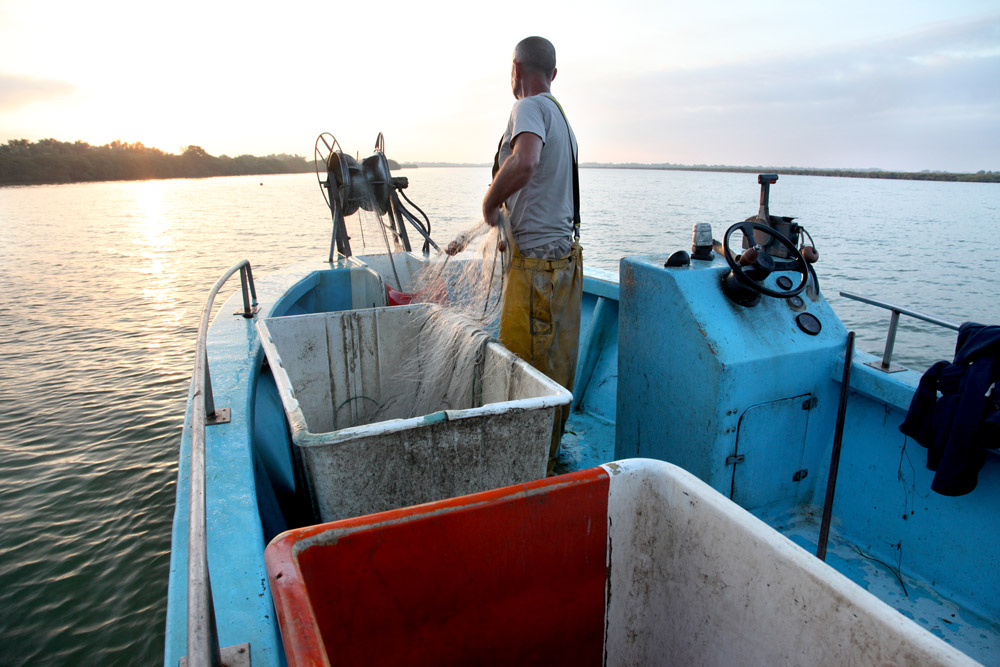
Hunting grounds of the Camargue
Home to a rich and multiple fauna, men have always practiced hunting and fishing in the Camargue. Hunting for wild game or water game, this popular recreational activity is carried out either on public or communal lands, or in private hunts on large estates.
Bird game hunting
When it comes to hunting ducks, the most used technique is the chasse à la passée. This hunt is allowed up to 30 minutes after sunset : speed and accuracy are required! The passing also takes place in the morning, when the ducks take off to reach their resting place.
The Mas of Camargue
Agriculture in the Camargue is carried out on large properties. One quarter of the farms have estates of over 100 hectares and some even over 2,000 hectares. The Camargue farmhouse (Mas) is a farm composed of the owner’s place of residence and the production site. It is built on the highest ground in order to be protected from flooding and sheltered from the mistral winds. The buildings and workers’ accommodation are grouped around the main farmhouse forming a courtyard. Over time, some have become real hamlets. In this land of sand and salt without building stones, the first Mas were built with the materials of previous buildings some of which dating back to the Middle Ages or Antiquity. Otherwise, it is at great expense that the owners bring the stone from Beaucaire or Fontvieille for the construction of their farmhouse.
Now, many Camargue farmhouses offer accommodation, cottages or guest rooms, very popular for their charm and authenticity.
Agritourism in the Camargue
Do you enjoy meeting new people? Do you want to share the real life of the locals? A wide range of agritourism offers is available in the Camargue which will satisfy your quest for authentic experiences.
